14 Types Of Palm Trees In Texas: A Guide To The Most Popular Species
When it comes to palm trees, Texas is home to a diverse range of species. From the majestic Sabal Palm to the more compact Dwarf Palmetto, each type has its unique characteristics and growing conditions. In this article, we’ll explore the most common types of palm trees found in Texas, including their appearances, habitats, and potential uses in gardening or landscaping.
For those looking to add a touch of tropical flair to their outdoor space, understanding the different types of palm trees that thrive in Texas can be a valuable resource. Whether you’re a seasoned gardener or just starting out, this information will help you make an informed decision when choosing the perfect palm tree for your needs.
Some popular species include the Sabal Palm, California Fan Palm, and Jelly Palm, each with its own set of characteristics that can impact growth and maintenance. Additionally, factors such as climate, soil quality, and sunlight exposure will also play a role in determining the best type of palm tree for your specific situation.
As you begin your journey to discover more about the types of palm trees in Texas, we’ll provide an overview of each species, including their common habitats and uses. With this knowledge, you’ll be well-equipped to find the perfect palm tree for your Texas landscape.
Types of Palm Trees in Texas
Sabal Palm or Cabbage Palm (Sabal palmetto).
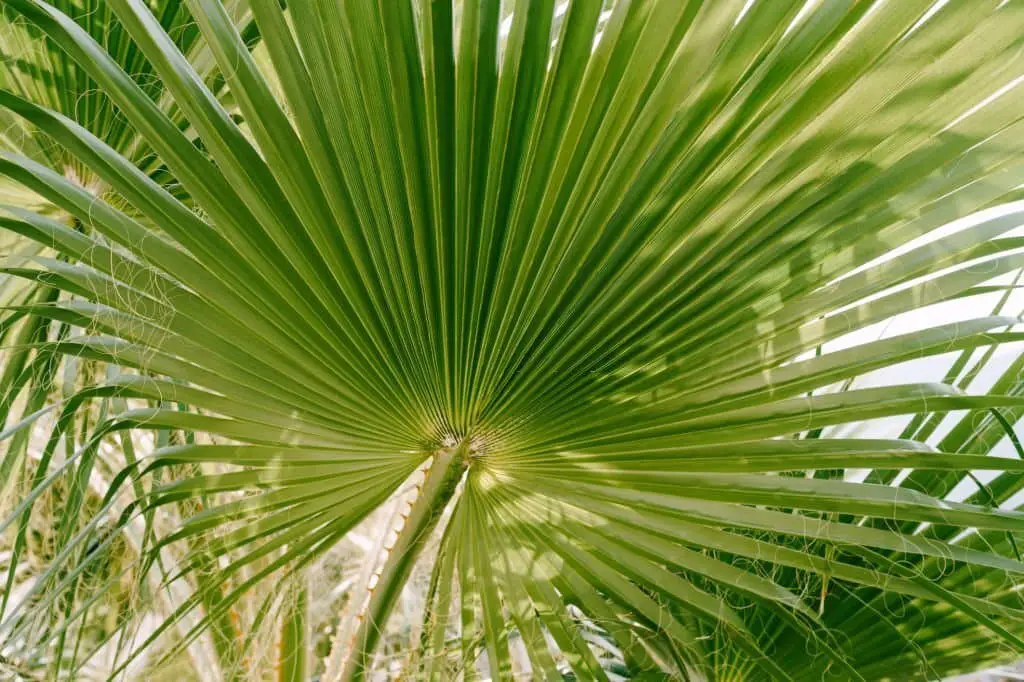
In Texas, one of the most widespread palm species can be found thriving throughout the state. This particular type of palm tree grows to a remarkable height of 50 feet, boasting a sturdy trunk with a diameter of two feet. The leaves of this palm are characterized by their unique palmate shape, featuring a central rib and radiating veins that provide structural support. In addition to its striking foliage, this species produces white flowers that cluster at the base of the leaf stems.
The fruit of this palm is equally distinctive, taking the form of small, spherical black berries approximately one inch in diameter.
California Fan Palm (Washingtonia filifera).
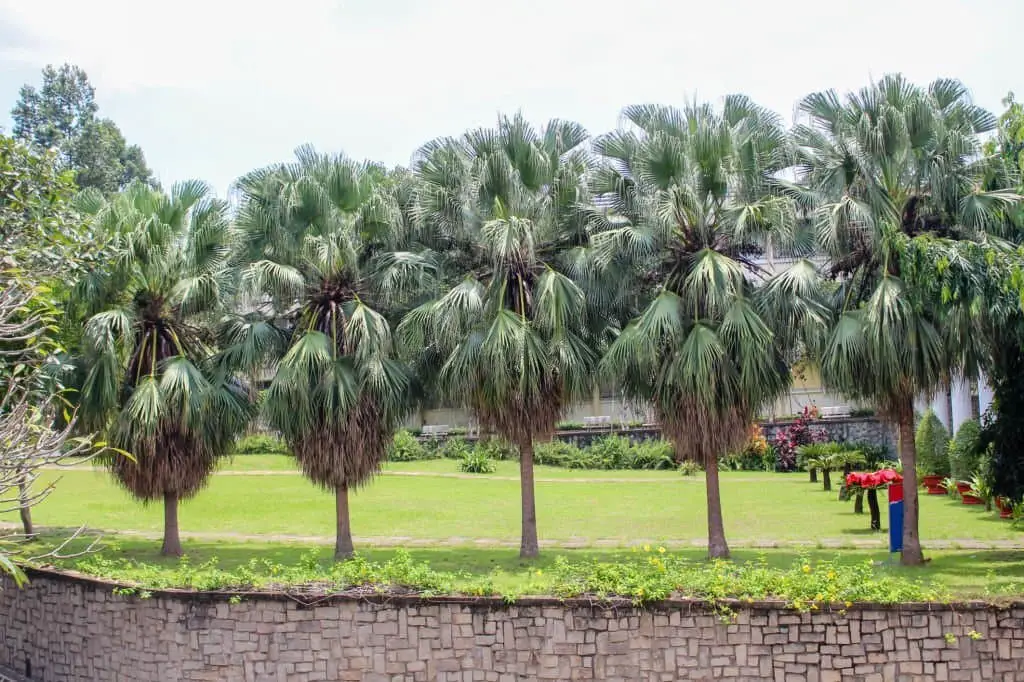
The California fan palm stands out for its exceptional drought tolerance, capable of thriving even at temperatures as low as 15 degrees Fahrenheit. Its impressive growth rate allows it to reach heights of up to 50 feet and spreads of 20 to 30 feet. A striking feature of this palm is the vibrant blue-green hue of its leaves, which have a leathery texture. In the spring, the tree produces small white flowers, followed by the formation of black fruits.
Native to the desert regions of California, Arizona, and Mexico, the California fan palm has adapted to these arid environments.
Chinese fan palm (Livistona chinensis).
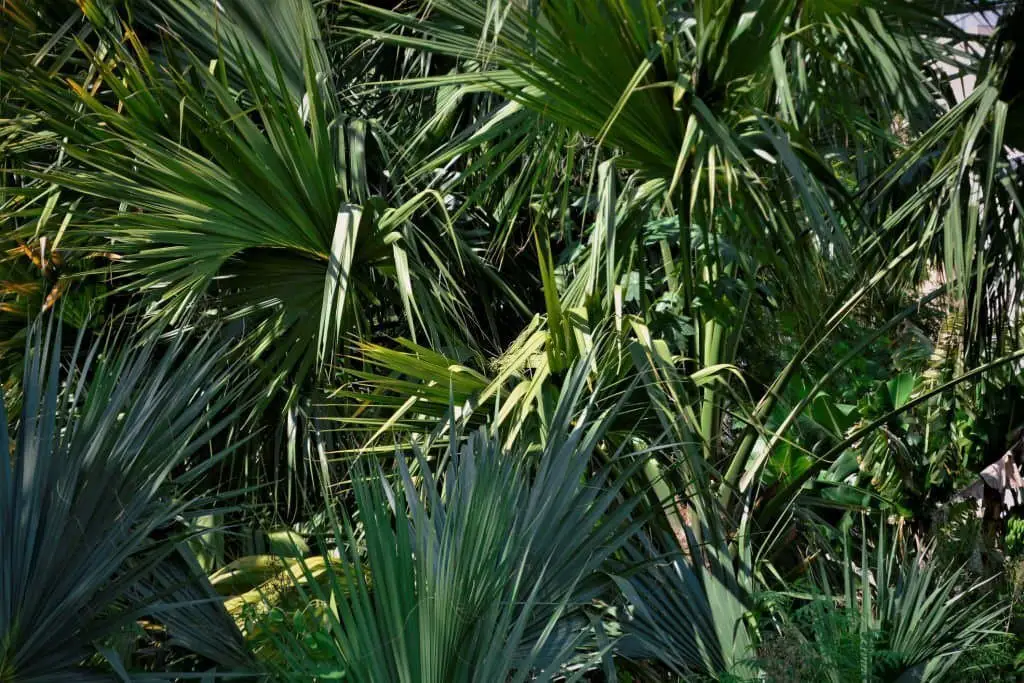
The Chinese fan palm is a versatile species that thrives in various environments. Native to southern China’s provinces, it is also cultivated throughout Asia and has been successfully introduced to Florida and Texas in the United States. This tall tree can grow up to 20-25 meters (66-82 feet) high, with palmate leaves featuring five to seven narrow, lanceolate leaflets. The flowers are borne in axillary inflorescences, while the fruits take the form of black drupes.
As a popular ornamental tree in China and other Asian regions, the Chinese fan palm is equally well-suited for landscaping and street tree applications in Florida and Texas. Its adaptability to a wide range of soil types and climates makes it an ideal choice for homeowners seeking a low-maintenance option. Moreover, this species is naturally resistant to most pests and diseases, further simplifying its cultivation.
The Chinese fan palm’s hardiness has made it a sought-after tree in Texas landscaping due to its tolerance of diverse soil conditions and climatic variations. Its ability to withstand various environmental conditions makes it an excellent selection for homeowners looking for a reliable and easy-to-care-for tree that can thrive as both a street tree and a focal point in their outdoor spaces.
Dwarf Palmetto (Sabal minor).
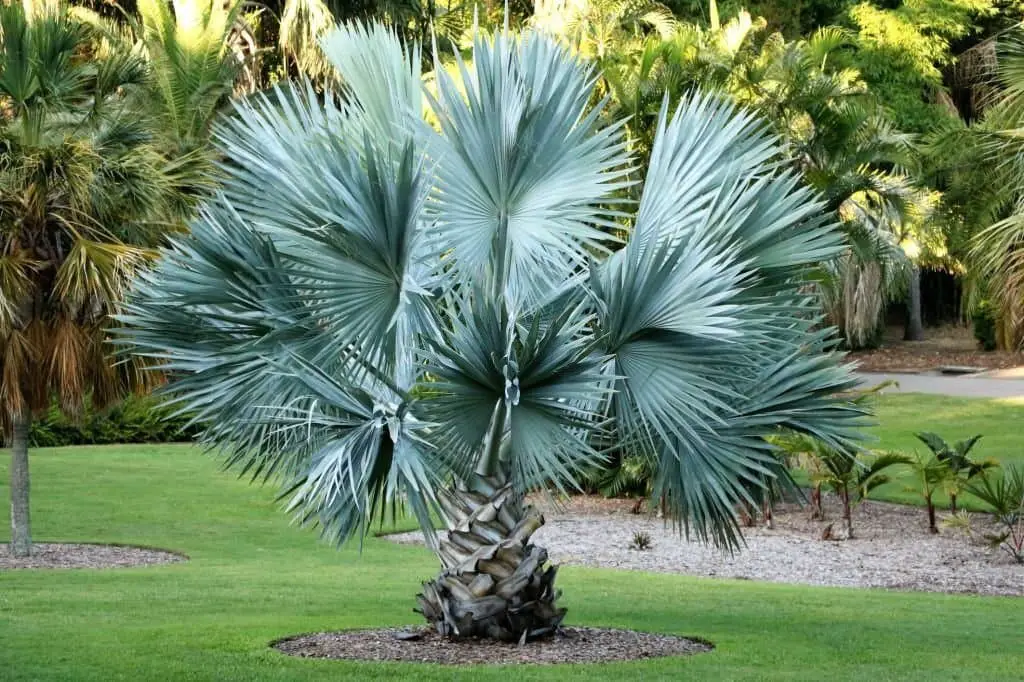
The Dwarf Palmetto palm tree is characterized by its compact growth habit, reaching heights of around 15 feet. Its leaves display a striking blue-green hue, while the trunk is adorned with brown fibers. This adaptable species thrives in various environments throughout Florida and the Gulf Coast states, including woodlands, floodplains, and hammocks. Its hardiness allows it to withstand cold temperatures and some salt spray exposure.
Moreover, this palm tree plays a vital role as a food source for numerous animals, such as the Florida panther. The fruits are relished by birds and small mammals, while the leaves serve as shelter for various creatures.
European Fan Palm or Mediterranean Fan Palm (Chamaerops Humilis).
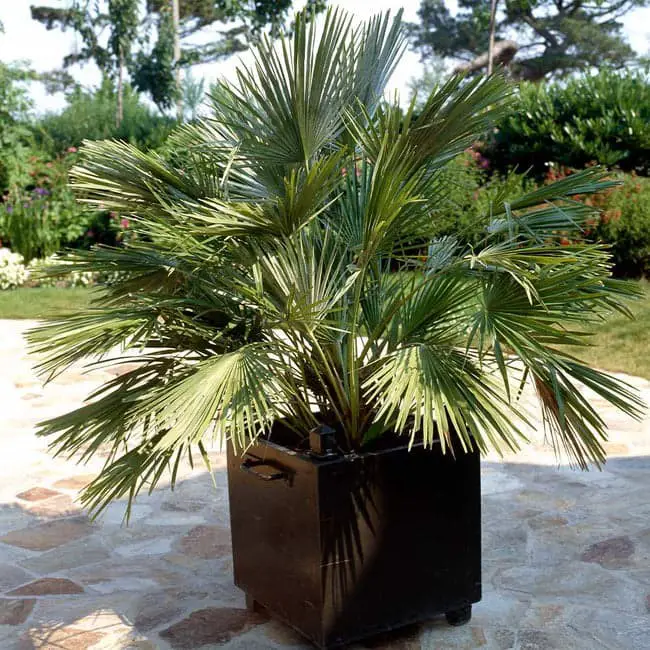
The European Fan Palm, an evergreen native to the Mediterranean Basin, has been introduced to other parts of Europe, North Africa, and the Canary Islands. This hardy palm can thrive in temperatures as low as 15 degrees Fahrenheit, although it generally prefers warm climates with low humidity. In terms of growth, the European Fan Palm is a slow-mover that can reach heights of up to 20 feet, featuring a slender trunk and gray-green leaves divided into 40-60 narrow segments.
The palm’s foliage is punctuated by small, yellow blooms that emerge in the spring, followed by black drupe-like fruits.
Jelly Palm or Pindo Palm (Cocos capitata).
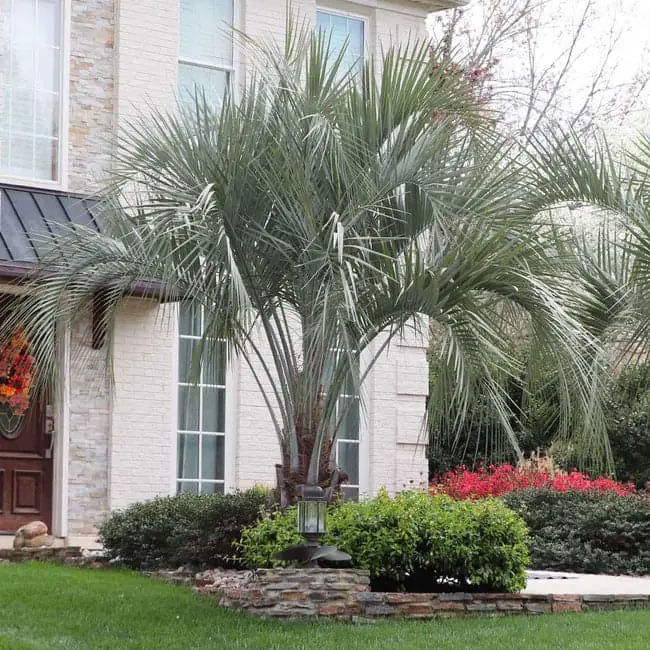
The Jelly Palm, a species of palm tree endemic to the southwestern United States and northwestern Mexico, boasts a unique profile. Reaching heights of 15-20 feet with a trunk diameter ranging from 12-18 inches, this palm is characterized by its striking features. Its pinnate leaves, measuring up to six feet in length, are a vibrant green hue.
The tree’s white flowers are arranged in inflorescences that can stretch up to three feet long, while the fruit takes the form of a drupe, approximately two inches in diameter, containing a single seed. This adaptable palm thrives in diverse habitats, including arid desert landscapes, chaparral environments, and forest ecosystems. Its remarkable resilience allows it to withstand extreme temperatures as low as -15 degrees Fahrenheit and survive prolonged droughts.
Beyond its natural habitat, the Jelly Palm is often cultivated as an ornamental plant in landscaping projects or grown in containers for added versatility. Notably, this slow-growing palm requires minimal maintenance and can be propagated through seed germination or division of the rootball. While it prefers full sun exposure, it can tolerate partial shade conditions with ease.
Mexican Blue Palm (Brahea armata).

The Mexican blue palm (Brahea) has its origins in Mexico, but its popularity has transcended borders, with successful introductions to regions like Texas. This majestic tree can reach impressive heights of up to 20 meters (66 feet), making it a striking addition to any landscape.
Its unique features include leaves that display a vibrant blue-green hue and are arranged in a spiral pattern along the stem.
The white flowers, pollinated by bees, are another distinctive characteristic of this species. Furthermore, the Mexican blue palm produces black drupes, measuring approximately 0.75 centimeters (0.30 inches) in diameter.
As an evergreen tree, the Mexican blue palm retains its foliage year-round. Its adaptability to dry conditions and high temperatures has made it a favorite among landscape enthusiasts in Texas.
Additionally, this species can thrive in containers, making it an excellent choice for small yards or patios seeking a low-maintenance yet visually appealing addition.
Needle Palm (Rhapidophyllum hystrix).
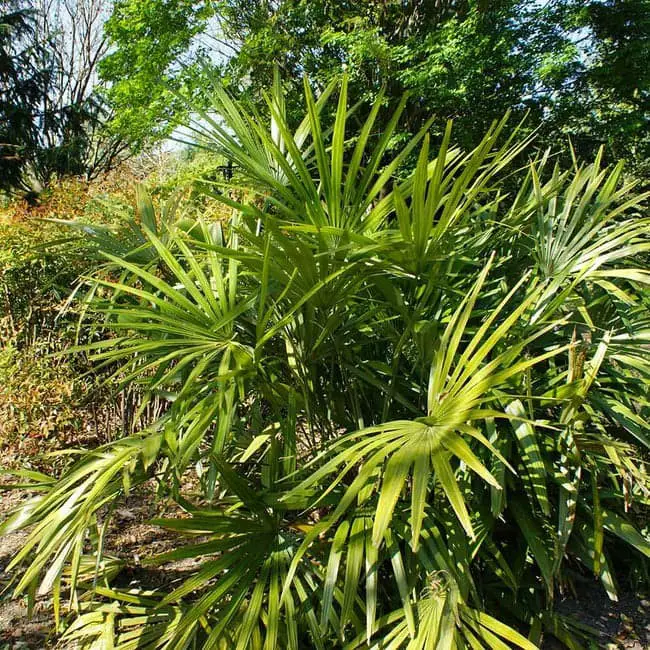
In the eastern United States, there’s one palm species that stands out from the rest – the Needle Palm. This small fan palm is a clumping grower that can reach heights of up to six feet, making it an attractive addition to any landscape. Its leaves are a striking green with yellow or white spots, while the leaflets themselves have a sharp, pointed shape that gives this palm its distinctive name.
What’s more, the Needle Palm is remarkably resilient and can thrive in cold temperatures, even handling snow and ice without batting an eyelid. For those who want to bring a touch of tropical flair to their outdoor space without the hassle of high-maintenance palms, the Needle Palm is an excellent choice. Its low-maintenance nature means it can tolerate drought conditions with ease, making it a reliable option for busy gardeners.
Pygmy Date Palm (Phoenix roebelenii).
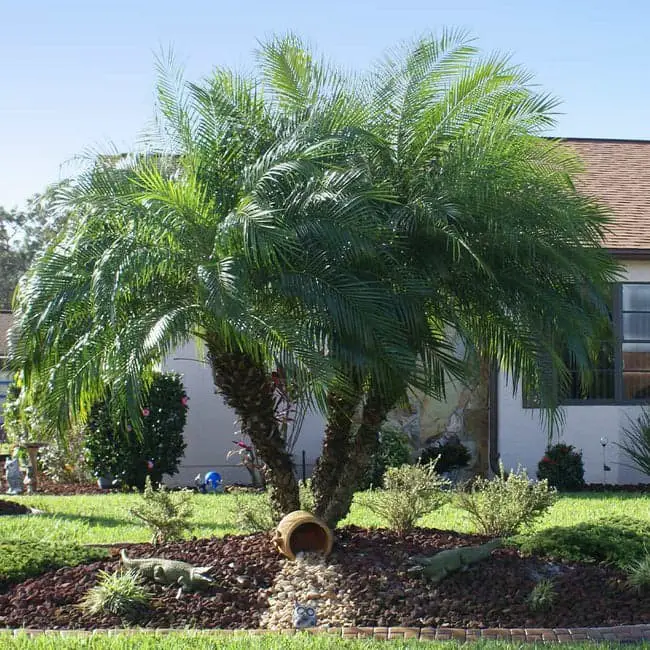
The Pygmy Date Palm has become a beloved fixture in many southern US landscapes. This compact palm tree typically grows to be around 15 feet (approximately 4.5 meters) tall, boasting a slender trunk and elegant, feathery leaves that add a touch of tropical charm to any setting. Native to Southeast Asia, the Pygmy Date Palm was introduced to the United States in the late 19th century and has since become a popular choice for landscaping due to its adaptability to various soil types and climates.
While it thrives in warm weather, this palm is unfortunately not cold-hardy, meaning it will perish if exposed to prolonged freezing temperatures.
Queen Palm (Syagrus romanzoffiana).
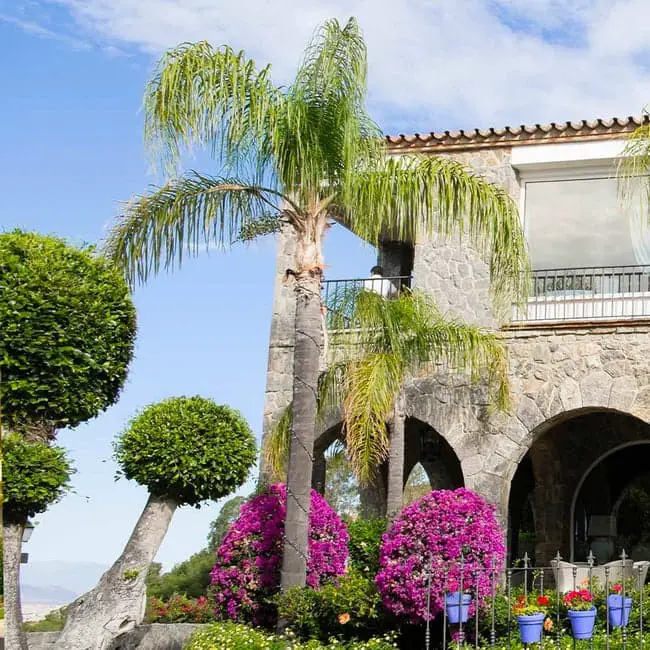
The Queen Palm, native to Brazil but widely cultivated globally, has earned its reputation as a stunning ornamental plant in warm climates. Its versatility also makes it suitable for use as a street or shade tree. Standing tall at around 30 feet (nine meters), this palm boasts a slender trunk with smooth, gray bark and features long, pinnate leaves comprising approximately 50 leaflets each.
The subtle yet elegant flowers appear in clusters at the base of these leaves, while the fruit takes the form of a black drupe measuring about an inch (two centimeters) in diameter.
Sago Palm Tree (Cycas revoluta).
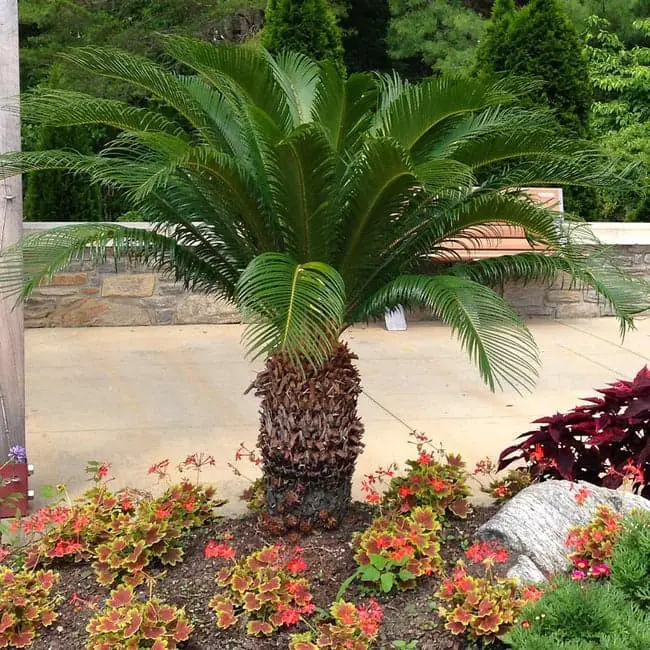
In Texas, the Sago Palm Tree stands out as one of the most sought-after types of palms. Reaching heights of up to 15 feet and boasting a lifespan of around 50 years, this evergreen tree is a popular choice among palm enthusiasts.
Although native to Japan, where it’s also known as the Japanese cycad, the Sago Palm Tree has gained popularity in Texas for its small white flowers.
What sets it apart, however, is that it’s not actually a true palm tree – a fact often overlooked by those who mistake it for one.
One crucial consideration when dealing with the Sago Palm Tree is its toxicity. If ingested by humans or animals, this tree can be hazardous to their health.
Silver Date Palm (Phoenix sylvestris).
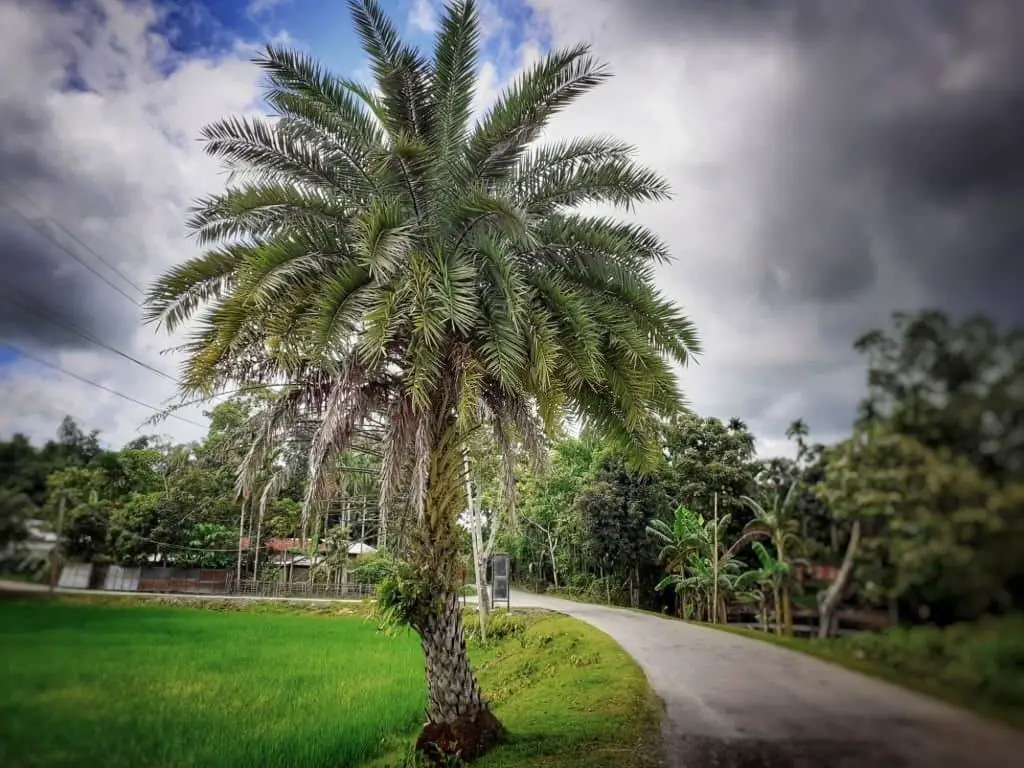
The silver date palm, native to the Indian subcontinent and South Asia, is a striking solitary palm that can reach impressive heights of up to 20 meters with a trunk diameter of up to 60 centimeters. Its pinnate leaves feature V-shaped leaflets, while its small white flowers give way to fleshy black fruits. This versatile palm is prized for both its ornamental value and its edible fruit, earning it the nickname kalpavriksha or ‘tree of heaven’ in India.
Additionally, it holds sacred significance in Hinduism, often planted near temples. The silver date palm is also referred to as the sugar date palm or wild date palm, with close ties to the true date palm (Phoenix dactylifera). While the two species are sometimes confused, the silver date palm can be distinguished by its smaller stature, silvery-gray leaves, and black fruits.
Found in the wild in India, Pakistan, Sri Lanka, and Bangladesh, it is also cultivated globally, with a presence in North America, South America, Africa, and the Middle East.
Texas Sabal Palm (Sabal Mexicana).
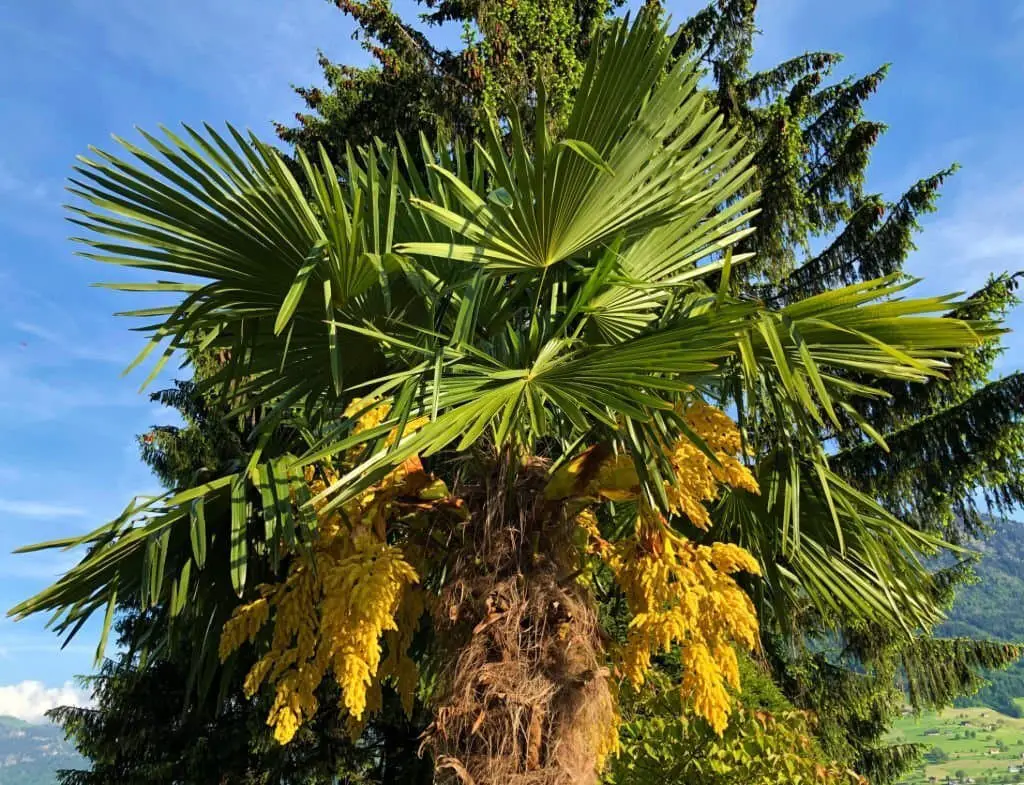
In the heart of Texas, you’ll find the majestic Texas Sabal Palm, proudly serving as the state tree. This slow-growing palm can reach an impressive 30 feet in height, with a sturdy trunk diameter of two feet. Its natural habitat is found in south and southwest Texas, as well as Mexico, where it thrives in sandy or loamy soils that allow for healthy growth even in dry conditions. As a vital source of sustenance and shelter, the Texas Sabal Palm plays a crucial role in supporting local wildlife.
The fruit of this palm is devoured by birds, squirrels, and deer, while its leaves are put to good use in traditional practices like thatching roofs and crafting baskets. Interestingly, within Mexico’s borders lies a subspecies of the Texas Sabal Palm – the Palma de la Abuela (Sabal mexicana) – which can be found in the states of Tamaulipas, Veracruz, and Puebla.
Windmill Palm (Trachycarpus fortune).
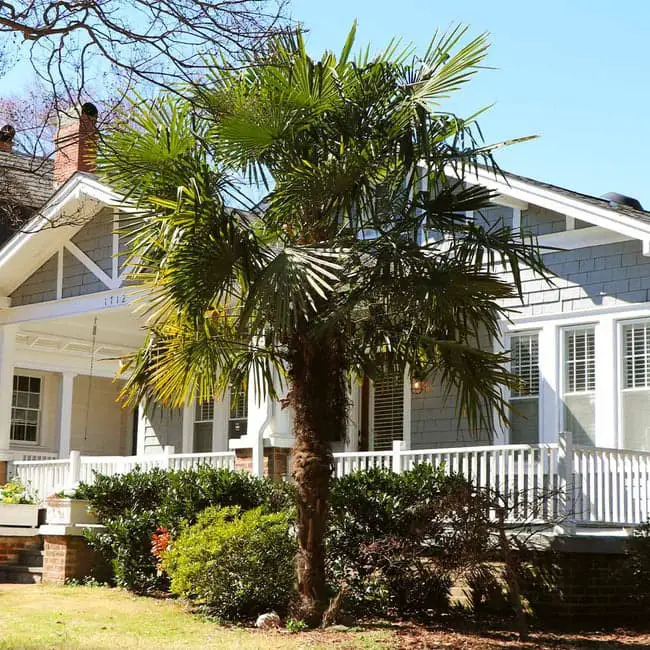
In Texas, one type of palm tree stands out from the rest: the Windmill Palm. Its large, rounded leaves and slender trunk make it easily recognizable. With the ability to grow up to 30 feet tall, these trees are a staple in many backyards. But what really sets them apart is their impressive drought tolerance, making them perfect for areas with limited water supply.
Originating from China, Windmill Palms were introduced to the United States in the late 1800s and have since spread across the country. If you’re looking for a palm tree that can withstand harsh weather conditions – think cold temperatures and high winds – then the Windmill Palm is an excellent choice. Not only are they resilient, but they’re also remarkably low maintenance, requiring minimal care to thrive.
Cost of palm trees in texas.
Palm trees are a staple in many Texas landscapes, bringing a touch of tropical charm to outdoor spaces. However, before you start shopping for these versatile plants, it’s essential to consider the cost involved. The average price range for palm trees in Texas spans from $25 to $75 for smaller palms and from $100 to $250 for larger varieties.
While these estimates provide a general idea of what to expect, it’s crucial to note that prices can fluctuate depending on the type of palm tree, its size, and the time of year. With this information in mind, you’ll be better equipped to make an informed decision when selecting the perfect palm tree for your Texas property.
FAQs
Do palm trees do well in Texas?
While the suitability of a palm tree in Texas depends on its specific type, some palms like the sago palm may not fare well in the state’s climate due to its sensitivity to heat and dryness. On the other hand, palms such as the sabal palm are more resilient and can thrive in Texas’s hot and arid conditions.
Where are palm trees located in Texas?
Palm trees thrive in various regions of Texas, with the Rio Grande Valley being a hotspot for their presence. Along roadsides and residential yards, these iconic trees are a common sight. Similarly, South Padre Island boasts an abundance of palms, which line the beach and provide much-needed shade for visitors. Coastal areas like Galveston and Corpus Christi also feature palm trees in their natural habitats.
While less prevalent inland, cities such as Austin and San Antonio do have scattered palm tree populations. Ultimately, warm and water-rich environments across Texas serve as the perfect breeding ground for these majestic palms.
Can palm trees survive winter in Texas?
While it may seem counterintuitive, palm trees can indeed thrive in Texas’s winters with proper care. To ensure your palm tree survives the colder months, you must first select a species suitable for your region. In Texas, common types of palm trees include Sabal palms, Saw palmetto palms, Texas palms, and Windmill palms. Each variety has unique requirements, so research is crucial to provide optimal care. In general, palm trees require protection from harsh winter conditions.
This necessitates shielding them from freezing temperatures using methods like wrapping the trunk with burlap or other materials, potting the tree and bringing it indoors, or situating it in a sheltered location. Once your palm tree is safeguarded from the cold, provide it with consistent moisture. Palm trees are susceptible to drought, so regular watering during winter is essential. However, be mindful of over-watering by checking soil conditions before each hydration session.
By following these guidelines, you can successfully help your palm tree weather Texas’s winters.
Can palm trees grow in Fort Worth Texas?
While it may come as a surprise to some, palm trees can indeed grow in Fort Worth. The city’s climate is more diverse than one might think, allowing for a range of plants and trees to flourish. In fact, palm trees are quite prevalent in the area, often found lining streets or gracing front yards with their tropical charm.
Conclusion
As you conclude your search for the perfect palm tree to enhance your Texas home or landscape, we trust this guide has provided valuable insights. With numerous species to select from, each boasting its distinct characteristics and advantages, it’s essential to consider factors like climate, soil type, and intended use when making your final choice. Remember to consult with a local nursery or expert to ensure you’re selecting the ideal palm tree for your specific needs.
Related Posts
Transforming outdoor spaces with an array of plants is crucial, especially when it comes to choosing the right variety. From the classic apple tree to evergreen options, selecting the perfect plant can elevate your property’s aesthetic appeal. Moreover, understanding the role trees play in a property and how they impact its value can be instrumental in making informed decisions about landscaping. Beyond just aesthetics, trees also have a significant impact on a property’s overall appeal.
Not only do they provide shade and beauty, but they can also increase the value of your home. Conversely, removing certain types of trees can enhance your property’s curb appeal. When it comes to cultivating organic blueberry plants in your garden, it’s essential to understand the specific requirements for their growth.
On the other hand, discovering alternative options like the Cleveland Pear tree, which is often preferred over the Bradford Pear due to its more manageable size and lesser maintenance needs, can be a game-changer. Ultimately, whether you’re looking to enhance your property’s appeal or start a career in tree care, understanding the importance of trees and how they interact with their surroundings is vital.
By exploring different plant varieties and learning about the impact trees have on properties, you’ll be well-equipped to make informed decisions that benefit both your home and the environment.






